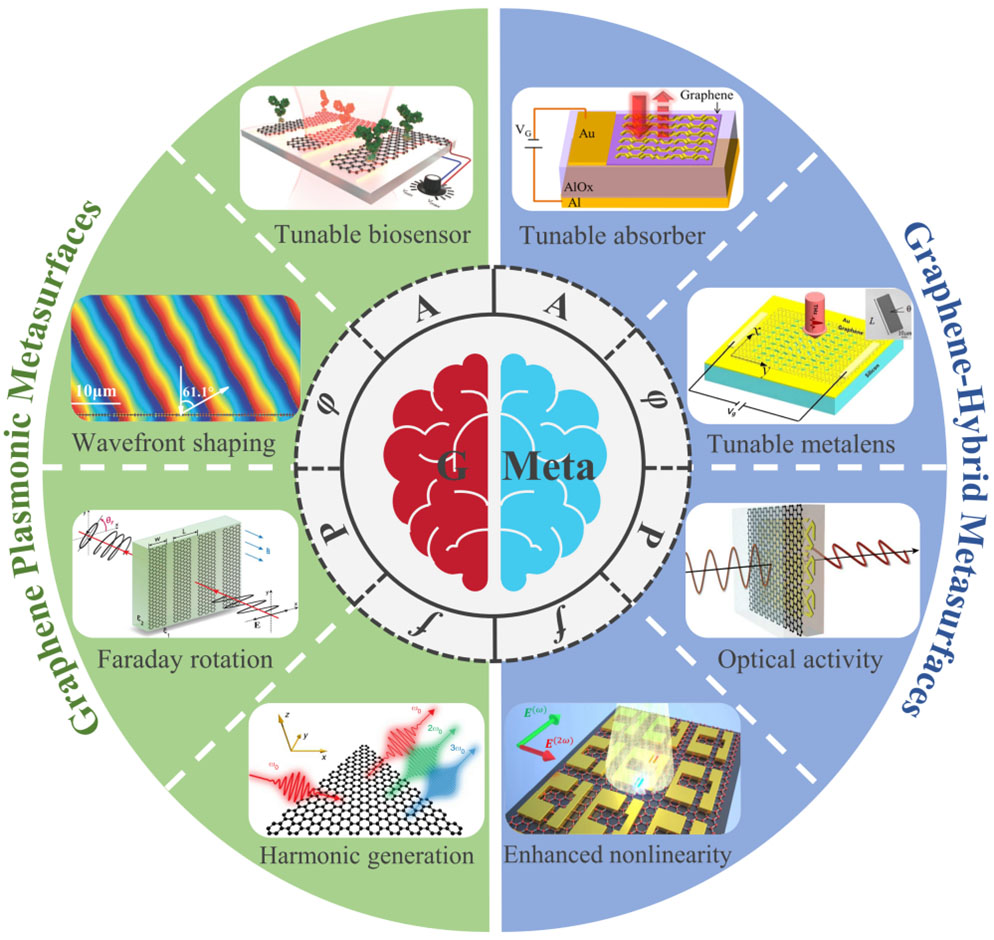| May 05, 2022 |
Dynamic metasurfaces and metadevices empowered by graphene
(Nanowerk News) Metasurfaces, artificial subwavelength structured interfaces, exhibit unprecedented capabilities to manipulate electromagnetic (EM) waves ranging from visible to terahertz and microwave frequencies.
|
|
In the past decade, static metasurfaces and metadevices have been researched extensively. Due to the passive nature of building blocks in general made of metals and/or dielectrics, however, their functionalities cannot be actively tuned in situ after fabrication, which seriously impedes their application scenarios such as varifocal lens, dynamic holography, and beam steering in LiDAR.
|
|
Motivated by those significant requirements, scientists have struggled for years to improve the dynamical tunability of metasurfaces, and introducing active materials or components into the passive metasurfaces has been proposed as the first thought strategy.
|
|
To date, various active materials and components such as transparent conducting oxides, phase-change materials, 2D materials (particularly graphene), varactor diodes, elastic materials, and micro-electro-mechanical systems, have been demonstrated theoretically and experimentally to empower the active tunability to metasurfaces and metadevices by applying external thermal, electrical, optical, and mechanical stimulus, giving rise to a new direction, i.e., dynamic (e.g. tunable, reconfigurable, programable, intelligent, and digital coding) metasurfaces and metadevices.
|
|
It should be noted that although previous researches provide a major source of inspiration for dynamic metasurfaces and metadevices, each type of active materials and components holds a set of unique characteristics, provides encouraging opportunities, and also suffers from different limitations as well as challenges.
|
|
Several excellent review articles published in recent years have focused on this area to discuss the aforementioned issues. However, a comprehensive review on graphene-based dynamic metasurfaces and metadevices is still absent, which are of equal and even more significance due to the extraordinary properties of graphene.
|
|
In this article (Opto-Electronic Advances, "Graphene-empowered dynamic metasurfaces and metadevices") the authors divide graphene-empowered dynamic metasurfaces and metadevices into two categories, i.e., metasurfaces with building blocks of structured graphene and hybrid metasurfaces integrated with graphene, as shown in Fig. 1.
|
 |
| Overview of state-of-the-art selected functionalities of dynamic metasurfaces and metadevices empowered by graphene. (Image courtesy of the researchers)
|
|
The state-of-the-art developments in dynamic spectrum manipulation, wavefront shaping, polarization control, and frequency conversion are highly elaborated in near/far fields and global/local ways, respectively. Remaining challenges and potential future developments are also outlined and analyzed.
|
|
The authors believe that due to the intrinsic advantages of compact footprint, remarkable electrical tunability, broadband and high-speed operation, graphene and graphene-like 2D materials are propelling the EM wave manipulations using metasurfaces to a new height: from static to dynamic, which will certainly revolutionize EM wave manipulations and allow for future commercial applications.
|

